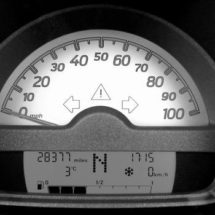


Monday, July 2nd, 2018
A booming economy is providing little boost to the critical spring homebuying season, which is stuck in neutral due to a lack of inventory, high home prices and rising mortgage rates.
Existing home sales have declined compared with a year earlier in four out of the first five months of this year. Sales of previously owned U.S. homes dropped in May from the prior month, the National Association of Realtors said Wednesday. Compared with a year earlier, sales in May were down 3%.
The warm spring months near the end of the school year are an important test for the housing market because some 40% of home sales each year take place in March through June.
This should be a boom time for the housing market given that surveys of household confidence are at elevated levels, and the unemployment rate in May ticked down below 4%, the lowest since April 2000. Sentiment and unemployment are usually strong drivers of demand for homes.
Instead, home sales are lackluster. That is locking many young home buyers out of the market when a good job market should give them the opportunity to purchase a first home. First-time buyers made fewer purchases in May compared to the prior month and a year earlier, according to the National Association of Realtors.
Supply is tight in part because of a lack of new-home construction caused by regulatory barriers, lack of available land, and labor and material shortages. Existing homeowners also have been reluctant to put homes on the market.
The situation could grow more challenging for buyers in the months ahead if mortgage rates continue rising. The average interest rate on a 30-year fixed-rate mortgage in May was 4.6%, up more than half a point from 4% in January, according to Freddie Mac.
At the same time, the median sale price for an existing home in May was $264,800, up 5% from a year earlier and a new all-time high, according to NAR. Prices have risen 71% from the low in January 2012.
The tax bill that passed in December also reduced some incentives for homeownership, especially in costly coastal markets and high-tax areas, by reducing the cap for the deductibility of mortgage interest and limiting the amount of state and local taxes that can be deducted. However, economists and real-estate agents said that thus far the boost to most people’s after-tax earnings provided by the bill is outweighing the reduction in the home-ownership-specific perks.
Mortgage rates aren’t yet high enough to convince people not to buy, but data from the Mortgage Bankers Association show slowing growth in the size of loans that borrowers are taking out. That suggests that home buyers are opting to purchase less expensive homes to compensate for higher borrowing costs. That ultimately pushes buyers at the bottom end of the market to the sidelines.
Rising mortgage rates and home prices also help deter existing homeowners, many of whom enjoy historically low rates, from selling because the cost of purchasing a larger home is a significant jump from their current monthly payment.
New construction is starting to pick up, but that mostly helps buyers at the high end of the market, while demand is most robust from buyers at lower price points. May saw 557,000 new listings hit the market, more than any month since July 2015, according to Realtor.com, but much of that increase was higher-end homes.
Here’s to hoping that something kick-starts more affordable sales sooner than later!